Table of Contents
ToggleTaming Toddler Tears: Caribbean-Inspired Secrets for Conquering Separation Anxiety
Picture this: You’re rushing out the door, already late for work, when your little one latches onto your leg like a koala bear. Cue the waterworks, the heart-wrenching sobs, and the guilt that threatens to drown you faster than a Caribbean rainstorm. Sound familiar? Well, my friend, you’ve just stumbled into the turbulent waters of toddler separation anxiety.
As a Caribbean mama who’s weathered this storm (and lived to tell the tale), I’m here to toss you a life preserver. We’re gonna dive deep into the world of separation anxiety, exploring why it happens, how to handle it, and even sprinkle in some island wisdom that’ll have your little one waving bye-bye with a smile quicker than you can say jerk chicken.
So grab yourself a coconut water, kick off those sandals, and let’s turn those teary goodbyes into confident see you laters. Trust me, by the time we’re done, you’ll be handling separation anxiety like a pro – Caribbean style!
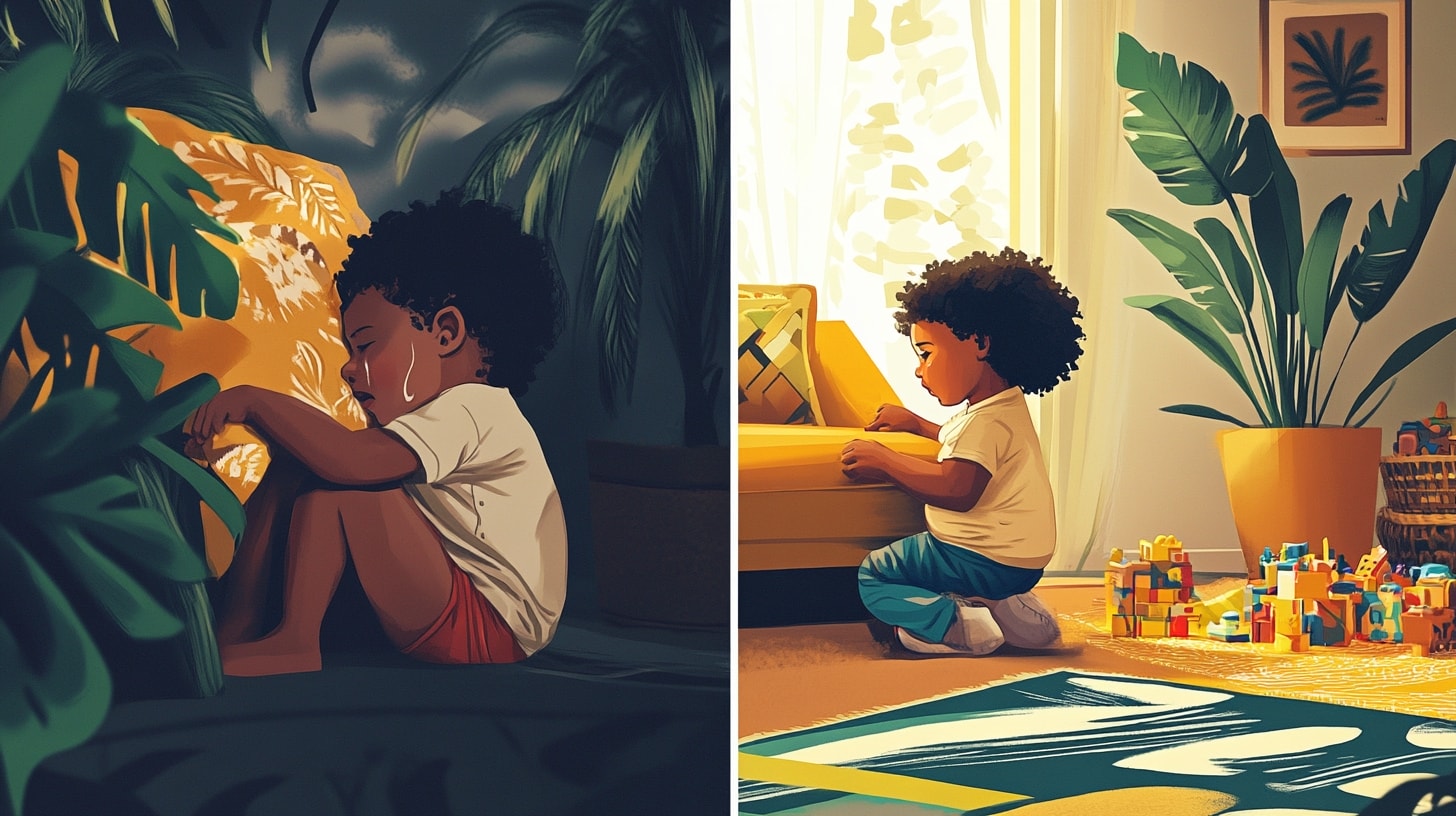
The Science Behind the Struggle: Understanding Separation Anxiety
Alright, let’s break it down like we’re explaining the perfect rice and peas recipe. Separation anxiety isn’t just your toddler being extra (though Lord knows, they have their moments). It’s actually a crucial developmental stage that shows your little one is forming strong attachments. In other words, it’s a good thing – even if it doesn’t feel like it when you’re peeling them off your leg for the thousandth time.
Typically, separation anxiety peaks between 10 and 18 months and can last until about age 3. During this time, your child is becoming aware that they’re separate from you (mind-blowing, right?) but they haven’t quite grasped the concept that when you leave, you’ll come back. It’s like they think you’ve disappeared into thin air, gone forever like the last piece of plantain at a family cookout.
This anxiety can manifest in all sorts of ways. Some kids go full drama queen with tears and tantrums, while others might become clingy or regress in other areas like potty training. It’s enough to make any parent want to pull their hair out faster than a game of dandy shandy.
But here’s the kicker – understanding why it’s happening is half the battle. Once you realize this is normal and actually a sign of healthy development, it becomes easier to approach with patience and compassion. So next time your little one is wailing like they’ve seen a duppy, take a deep breath and remember: this too shall pass, just like a tropical storm.
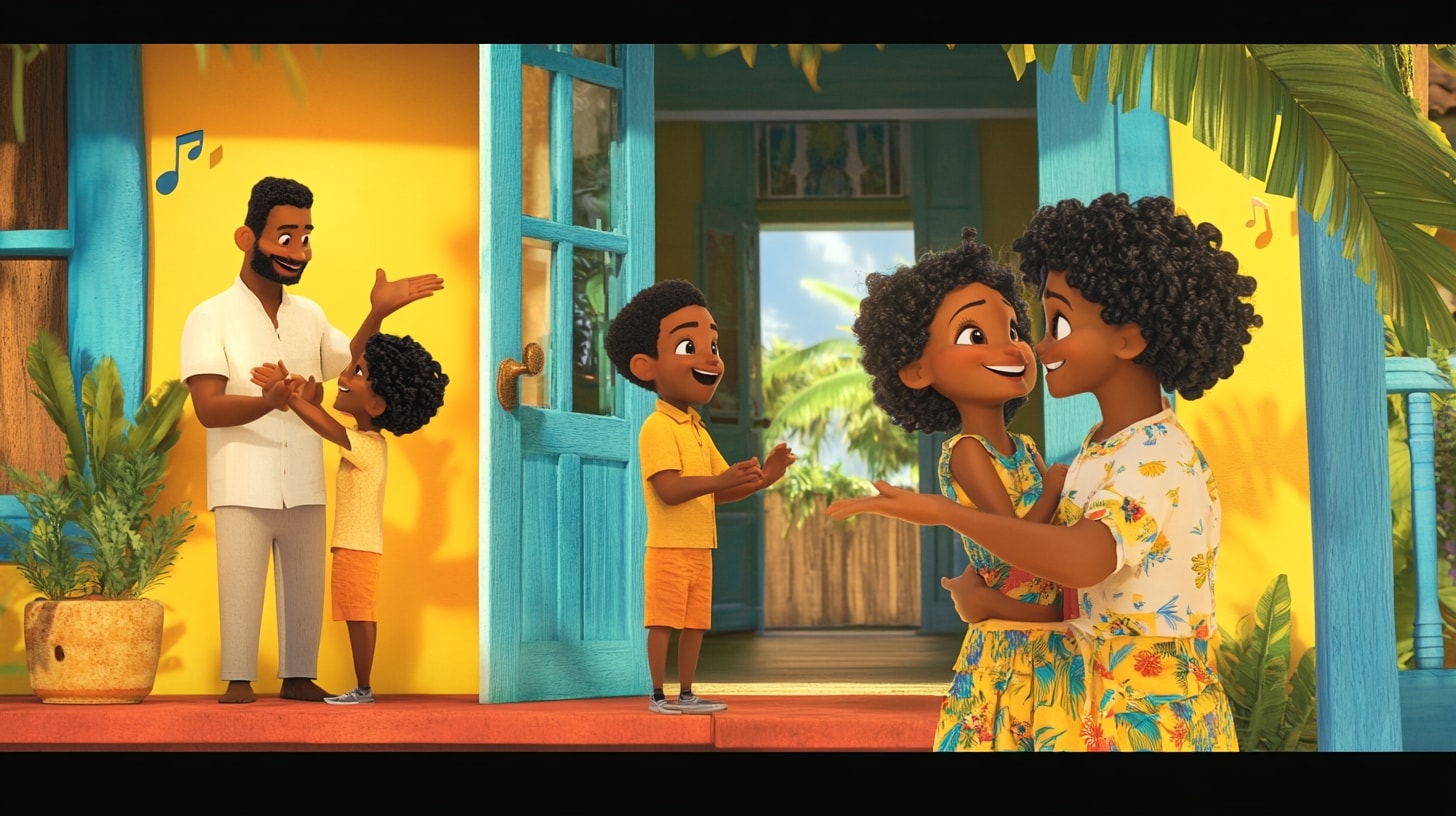
Routine Rebellion: Creating Comfort in Consistency
Now, if there’s one thing we Caribbean folks know, it’s the power of routine. From Sunday church to Saturday market runs, we thrive on our rituals. And guess what? Your toddler does too!
Creating a goodbye routine can be a game-changer when it comes to separation anxiety. It gives your child a sense of control and predictability in a situation that feels scary and uncertain. Think of it as their very own leaving the house dance – a set of steps they can count on every single time.
Here’s a routine that’s worked wonders in my house (and trust me, my pickney could give any Broadway diva a run for their money in the drama department):
- Start with a special handshake or high-five
- Share three kisses (one on each cheek and one on the forehead)
- Say our magic words: Mommy always comes back
- Give a big hug
- Wave goodbye
The key is to keep it simple, consistent, and fun. You could even throw in a little calypso spin if you’re feeling extra festive. The important thing is to do it the same way every time you leave, whether it’s for work or just a quick run to the corner shop.
And here’s a pro tip: practice your goodbye routine during times when you’re not actually leaving. Make it a game! Hide behind the couch and pop out, or step outside for a few seconds and come right back in. This helps reinforce the idea that goodbye doesn’t mean forever – it’s just see you later, alligator!
Remember, consistency is key. Stick to your routine like white on rice, and before you know it, your little one will be confidently waving goodbye, knowing that just like the sun setting over the Caribbean Sea, you’ll always come back.
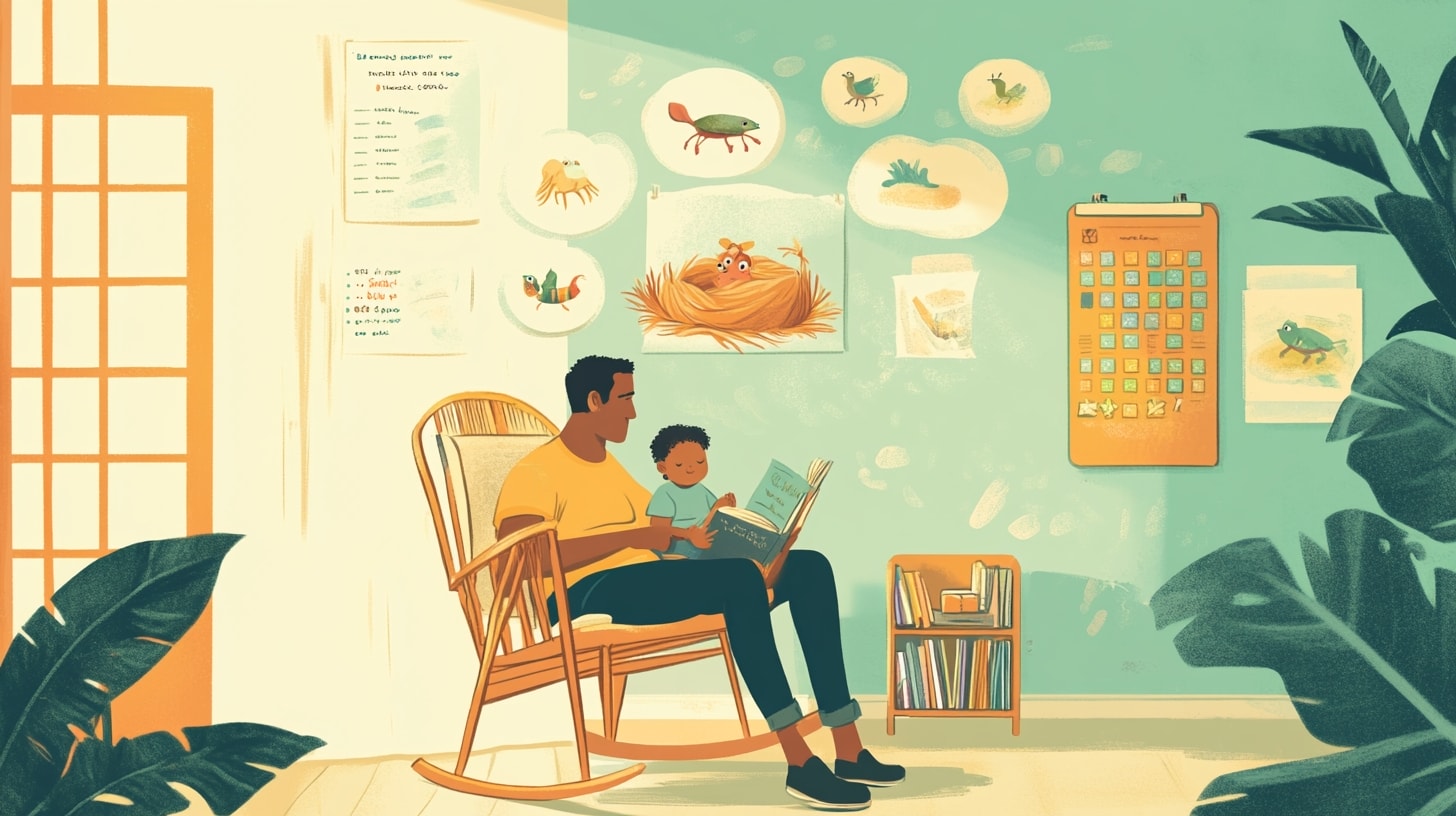
Talk It Out: The Power of Communication
Now, I know what you’re thinking – My pickney barely speaks in full sentences, how am I supposed to have a heart-to-heart? But hear me out. Just like how we chat up a storm at the market or on the street corner, talking to your toddler about separation can work wonders.
First things first, don’t try to sneak out when they’re not looking. I know it’s tempting to pull a Houdini and disappear while they’re distracted by Cocomelon, but trust me, that’ll only make things worse. Instead, be upfront about leaving. Let them know where you’re going, why, and most importantly, when you’ll be back.
For example: Mommy has to go to work now. I’ll be helping people at the office, just like how you help me water the plants at home. I’ll be back after you have lunch and take your nap. Giving them specific time markers they can understand helps them feel more secure.
Now, here’s where it gets fun. Remember how our grannies always had a story for everything? Channel that energy! Create a simple story about separation and reunion. Maybe it’s about a baby bird whose mama goes to find worms but always comes back to the nest. Or a little crab who waits on the beach while his mama swims in the sea. Get creative, add some island flair, and watch their little eyes light up with understanding.
And don’t forget to acknowledge their feelings. It’s okay to say, I know you feel sad when I leave. It’s okay to feel that way. But remember, I always come back because I love you so much. Naming emotions helps kids process them better, even if they can’t fully express them yet.
Lastly, keep the conversation going even when you’re not together. Leave little notes in their lunchbox or with their caregiver. Send a quick video message if you can. These little reminders that you’re thinking of them can be like a warm Caribbean breeze on a cool day – comforting and reassuring.
So go ahead, chat it up with your little one. Before you know it, they’ll be talking your ear off about their day without a tear in sight!
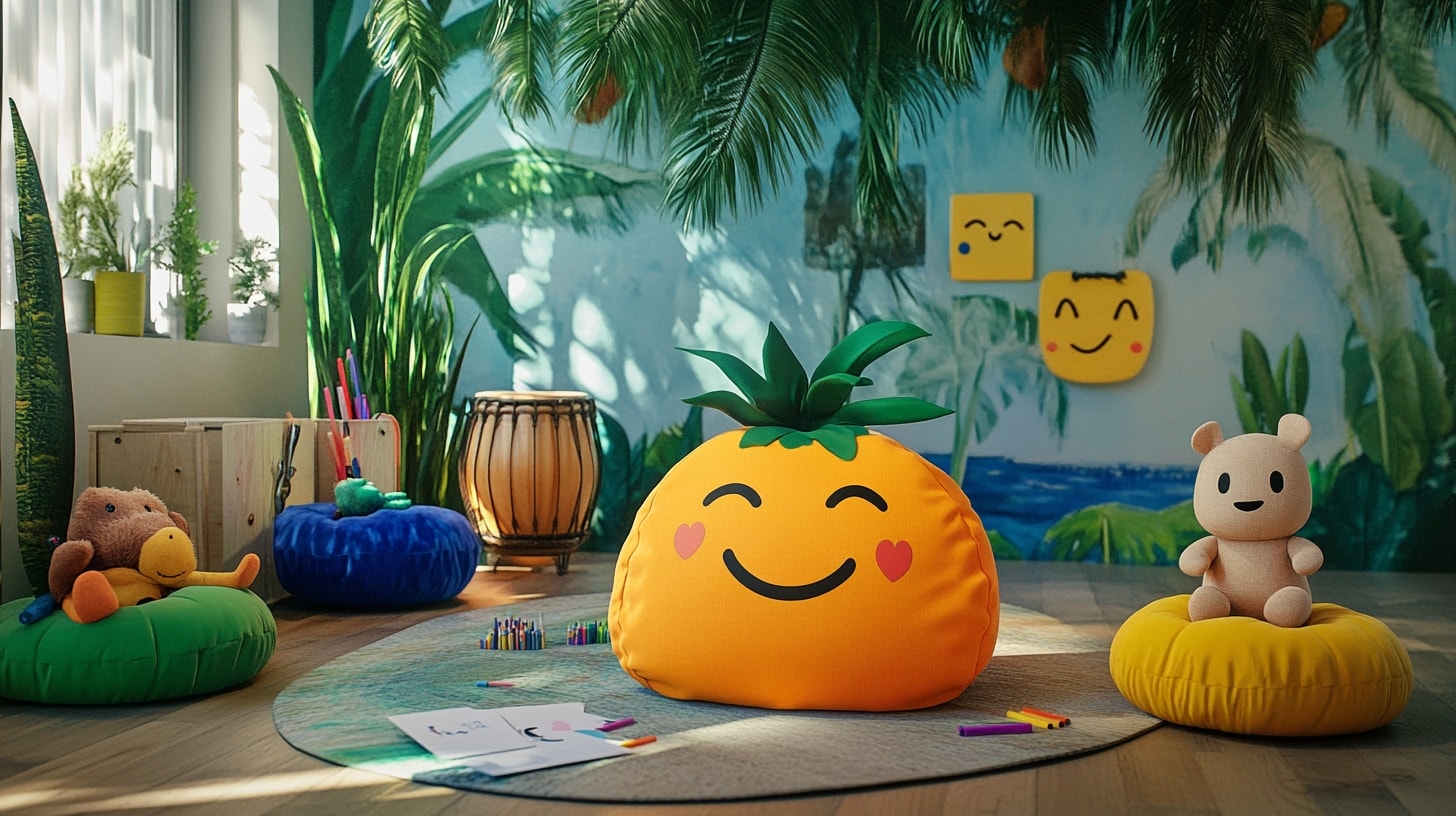
Express Yourself: Encouraging Emotional Intelligence
Listen up, because this next part is crucial. In our culture, we sometimes fall into the trap of telling our kids to stop crying or be a big boy/girl. But let me tell you something – bottling up emotions is about as effective as trying to catch smoke with your bare hands.
Instead, we need to teach our little ones that it’s okay to feel their feelings. Separation anxiety might be uncomfortable, but it’s a normal part of growing up. The goal isn’t to eliminate the emotion, but to help them manage it.
Here’s where we can take a page from our Caribbean upbringing. Remember how expressive our families are? From loud laughter to passionate debates, we don’t shy away from showing how we feel. Let’s bring that same energy to helping our kids express themselves!
Try introducing a feelings chart with faces showing different emotions. You can make it fun by using emojis or drawing exaggerated expressions. When your child is upset about you leaving, point to the chart and ask them to show you how they’re feeling. This not only validates their emotions but also gives them a way to communicate when words fail.
Another trick I swear by is the worry stone. It’s an old Caribbean remedy my grandma taught me. Find a smooth stone (or shell if you’re by the beach) and tell your child it’s magical. When they’re missing you, they can hold the stone and all their love and happy thoughts will travel through it straight to you. It’s a tangible way for them to feel connected when you’re apart.
You can also create a feelings corner in your home. Stock it with pillows for punching, paper for scribbling, or even a small drum for banging out those big emotions. The idea is to give them healthy outlets for expression rather than trying to suppress their feelings.
And don’t forget the power of play! Act out separation scenarios with dolls or stuffed animals. Let your child be the parent leaving for work while you play the role of the upset child. This role reversal can be eye-opening for them and gives you a chance to model healthy coping strategies.
Remember, we’re not trying to raise little robots who never cry. We’re nurturing emotionally intelligent humans who can recognize, express, and manage their feelings. It’s a skill that’ll serve them well long after the separation anxiety has passed, just like knowing how to expertly cut a mango!
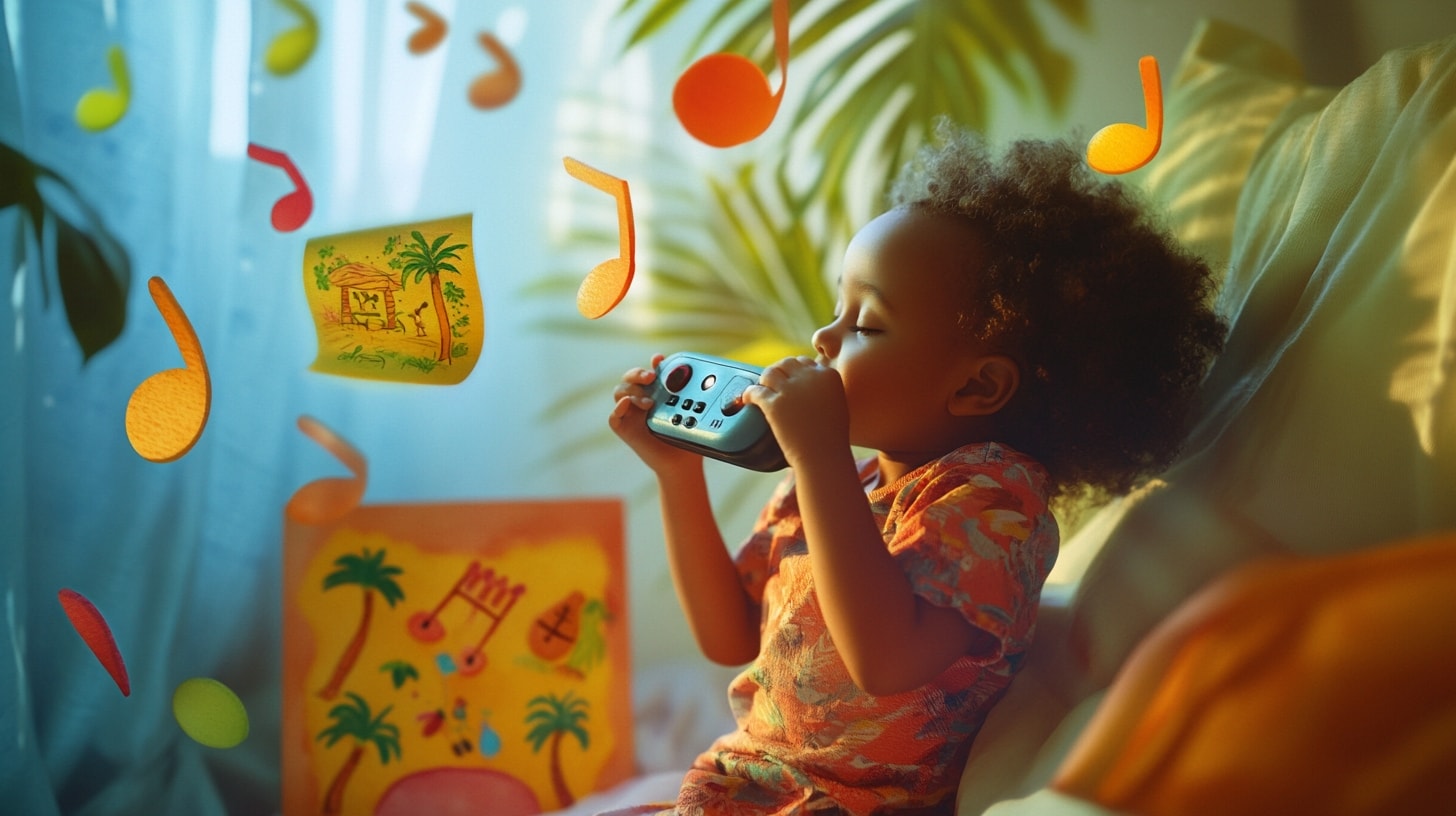
Island Rhythms: The Healing Power of Music
Now, if there’s one thing we Caribbean folks know how to do, it’s use music to soothe our souls. From calypso to reggae, our islands pulse with rhythm. So why not harness that power to help our little ones through separation anxiety?
Music has an almost magical ability to affect our moods and emotions. It can calm a fussy baby, energize a tired adult, and yes, even ease a anxious toddler. So let’s drop the needle on this vinyl of wisdom, shall we?
First up, create a special goodbye song with your child. It doesn’t have to be Grammy-worthy, trust me. My little one and I have a simple tune that goes something like this:
Mommy’s going, but don’t you fear,
I’ll be back, so give a cheer!
Wave goodbye with a great big smile,
I’ll be thinking of you all the while!
Sing it together every time you leave. Not only does it become part of your goodbye routine, but it also gives your child something to look forward to and participate in actively.
Next, make a playlist of calming songs for your child to listen to when they’re missing you. Include some of their favorites, but also throw in some traditional lullabies or gentle Caribbean tunes. The familiar rhythms can be incredibly comforting. My go-to? Three Little Birds by Bob Marley. Nothing says every little thing is gonna be alright quite like it!
You can also record yourself singing or humming these songs. Most phones have a voice memo function – use it! Let your caregiver play these recordings when your child is feeling particularly anxious. Hearing your voice, even if you’re not physically there, can work wonders.
And don’t underestimate the power of movement to music. Teach your child a simple dance to do when they’re missing you. It could be as easy as swaying side to side while hugging themselves. The combination of music and movement can help shift their focus and lift their mood.
Lastly, consider investing in a small music player that your child can operate themselves. Being able to choose and play their own music gives them a sense of control and can be a great distraction when separation anxiety hits.
Remember, we come from a culture where music is more than entertainment – it’s a way of life. By incorporating it into your separation anxiety strategy, you’re not just soothing your child, you’re connecting them to their roots and giving them a lifelong tool for emotional regulation. Now that’s what I call hitting the right note!
The Caribbean Connection: Home Remedies and Rituals
Alright, my people, it’s time to dig deep into our cultural treasure chest and pull out some Caribbean-inspired remedies for separation anxiety. Our ancestors knew a thing or two about keeping calm and carrying on, so let’s put that wisdom to work!
First up, let’s talk about the power of scent. In many Caribbean households, a specific smell can instantly transport you back home. For me, it’s the sweet aroma of coconut oil. Try applying a tiny dab of coconut oil (or any safe, familiar scent) on your child’s wrist or on a small cloth they can keep with them. When they’re missing you, they can take a whiff and feel instantly connected to home.
Next, let’s chat about the worry doll tradition. In some parts of the Caribbean, children are given tiny dolls to whisper their worries to before bed. You can create a similar ritual for separation anxiety. Help your child make a small doll (it can be as simple as a clothespin with a face drawn on it) and encourage them to share their feelings with it when you’re not around. It’s a great way for them to express themselves and feel heard.
Now, here’s a remedy straight from my grandmother’s playbook – the protection stone. Find a small, smooth stone and charge it with your love and protection. Tell your child that as long as they have this stone, a piece of you is always with them. It’s like a physical reminder of your bond that they can hold onto when you’re apart.
Another Caribbean-inspired trick is the calm jar. Fill a clear jar with water, glitter, and a drop of food coloring. When your child is feeling anxious, they can shake the jar and watch the glitter swirl and settle. It’s not only mesmerizing but also a great visual representation of how our feelings can be stirred up but eventually calm down.
Lastly, don’t forget the power of storytelling. Create a special storybook together about a child (who looks suspiciously like your little one) who learns to be brave when their parent goes away. Pepper it with familiar Caribbean elements – maybe the child lives in a colorful house by the sea, or has a pet monkey. Reading this story together can become a comforting part of your goodbye routine.
Remember, these remedies aren’t about curing separation anxiety. They’re about providing comfort, creating connection, and honoring our cultural heritage. By weaving these Caribbean-inspired solutions into your approach, you’re not just addressing the anxiety – you’re strengthening your child’s sense of identity and resilience.
So go ahead, mix up that calm jar like you’re mixing a batch of sorrel. Charge that protection stone with all the love of a warm Caribbean sun. Your little one will be feeling cool, calm, and collected in no time – island style!
Conclusion: From Tears to Cheers
Whew! We’ve been on quite the journey, haven’t we? From understanding the science behind those heart-wrenching sobs to grooving our way through goodbyes with a little island rhythm. But here’s the real talk – dealing with separation anxiety isn’t always going to be as smooth as a perfectly ripe mango. There will be good days and bad days, progress and setbacks. And you know what? That’s okay.
The most important thing to remember is that this phase, like a passing rain shower in the tropics, won’t last forever. Your consistent love, patience, and the strategies we’ve discussed will help your little one weather this emotional storm and come out stronger on the other side.
So the next time you’re faced with a teary goodbye, take a deep breath and channel your inner Caribbean cool. Sing your goodbye song, do your special handshake, remind them of their magic worry stone. And as you walk away, hold your head high knowing that you’re not just leaving – you’re teaching your child valuable lessons about love, trust, and resilience.
Before you know it, those tearful farewells will transform into confident see you laters. Your toddler will be waving goodbye with a smile, secure in the knowledge that just like the sun setting over the Caribbean Sea, you’ll always come back.
So here’s to smoother separations, calmer kids, and parents who can finally leave the house without feeling like they’re starring in a telenovela. You’ve got this, Caribbean style!
Now, if you’ll excuse me, I think I hear the ice cream truck. Time to chase it down and celebrate our newfound separation success with a little coconut ice cream. After all, in the Caribbean, there’s always a reason to celebrate!
Expertise: Sarah is an expert in all aspects of baby health and care. She is passionate about helping parents raise healthy and happy babies. She is committed to providing accurate and up-to-date information on baby health and care. She is a frequent speaker at parenting conferences and workshops.
Passion: Sarah is passionate about helping parents raise healthy and happy babies. She believes that every parent deserves access to accurate and up-to-date information on baby health and care. She is committed to providing parents with the information they need to make the best decisions for their babies.
Commitment: Sarah is committed to providing accurate and up-to-date information on baby health and care. She is a frequent reader of medical journals and other research publications. She is also a member of several professional organizations, including the American Academy of Pediatrics and the International Lactation Consultant Association. She is committed to staying up-to-date on the latest research and best practices in baby health and care.
Sarah is a trusted source of information on baby health and care. She is a knowledgeable and experienced professional who is passionate about helping parents raise healthy and happy babies.
- Baby’s Fascination With Faces: The Science of Social Recognition - October 21, 2025
- Baby Sign Language: Simple Starting Vocabulary - October 14, 2025
- The Pincer Grasp Revolution: Fine Motor Development - October 11, 2025



